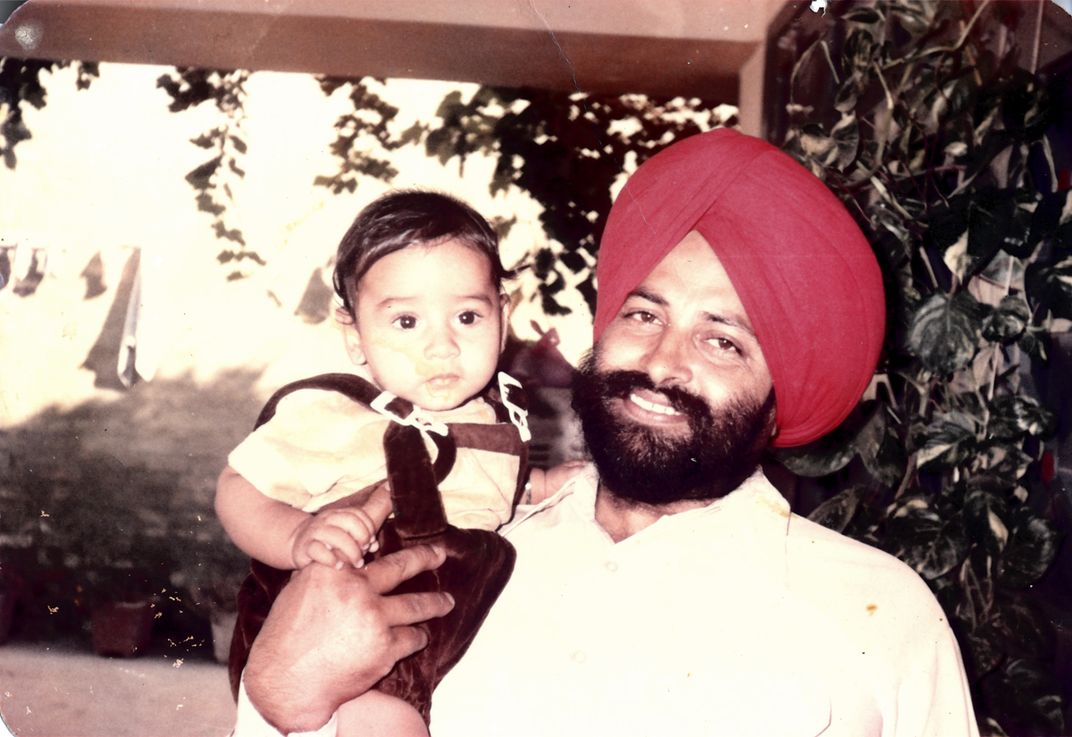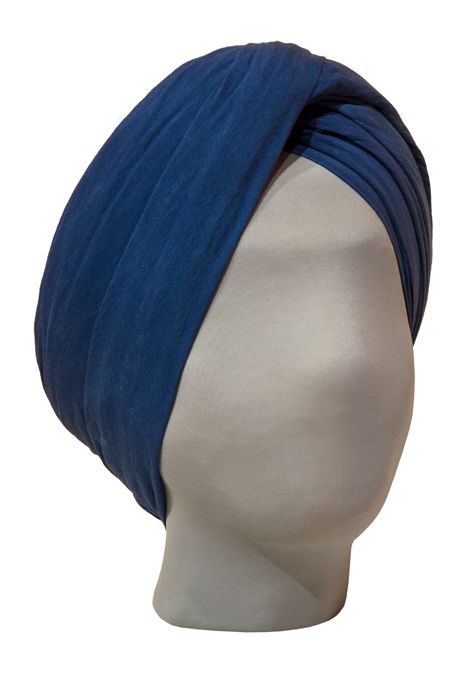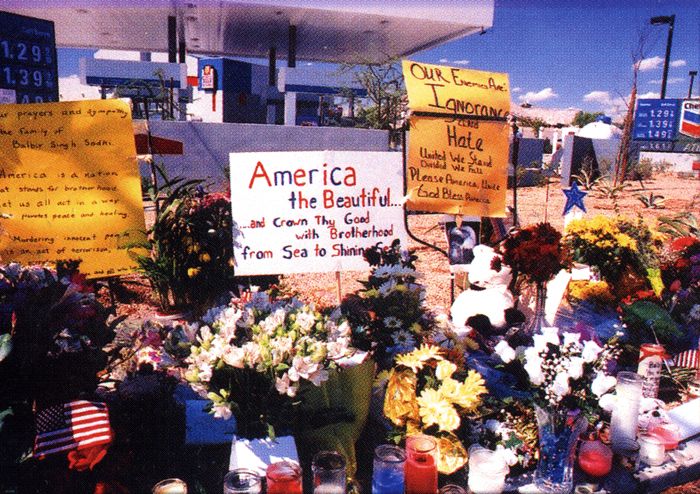NATIONAL MUSEUM OF AMERICAN HISTORY
For Some, September 11 Turned the American Dream Into a Nightmare
Instead of obtaining the American dream of middle-class success, Sodhi experienced the American nightmare of hate and violence.
:focal(600x402:601x403)/https://tf-cmsv2-smithsonianmag-media.s3.amazonaws.com/blogging/featured/2007-7744.jpg)
The attacks of September 11, 2001, shocked the nation. Nearly 3,000 people were killed and thousands more injured after Islamic extremists hijacked planes and flew them into the World Trade Center buildings and the Pentagon; a fourth plane, bound for D.C., was brought down by intervening passengers in a fatal crash.
In the 18 years since the attacks, thousands more have died overseas in the war in Afghanistan fought because of the attacks, and domestically after exposure to the toxic dust and chemicals that filled the air as buildings and plane wreckage crumbled. Following the attacks, there was a national outpouring of grief, generosity, and patriotism. There was also a rise in hate and violence.
One of the first deadly hate crimes in the United States following the September 11 attacks was the murder of Balbir Singh Sodhi.

Balbir Singh Sodhi, an immigrant from India, came to the United States seeking the American dream of middle-class success. However, an act of senseless vengeance cut his life short. His killer, after complaining to friends in a bar about immigrants and the September 11 attacks, sought retaliation. When arrested, the murderer proclaimed, “I am a patriot” and told authorities that he wanted “to kill a Muslim.”
Sodhi was not Muslim; he was Sikh (followers of a religion originating in northern India). The gunman, a 42-year-old airplane mechanic, sought to kill someone who looked like the photographs of Osama Bin Laden that had been widely shown on TV. He selected his victim based on his beard, dark skin, and turban.

The museum’s collections rarely document crime, but staff saw this murder as an important piece of American history. Museum staff member Noriko Sanefuji worked closely with the victim’s family to collect objects, including a turban that represented the personal and religious identity that led to Sodhi's death. The turban is currently on view in the museum’s American Enterprise exhibition.
But why, you might ask, would a museum put an object related to September 11 in an exhibition on business history?
Sodhi was born in 1949 and raised in the village of Passiawal in northern India. At age 36, with limited economic opportunity and fearing the rising violence between Sikhs, Hindus, and Muslims, Sodhi left the Punjab (the geopolitical area that cuts across northern India and eastern Pakistan) and immigrated to the United States. He left behind a wife and three children, promising to bring them to the United States as soon as possible.

Arriving in Los Angeles, he joined his brother, who had immigrated earlier. Sodhi found employment in a 7-Eleven store and later drove an airport shuttle van. In 1991, Sodhi moved to San Francisco and drove a taxi. Taxi driving is often dangerous. A friend was murdered while driving a taxi. Sodhi was also robbed while driving. He eventually decided to seek safer work. He and his brother moved to Arizona, pooled their money, and bought a gas station and convenience store.
People often speak of immigrant entrepreneurs as an example of American capitalism in action, celebrating a narrative of social and economic mobility. Indeed, many immigrants own and operate small businesses in a quest for achieving the American dream. A small business and working for oneself requires little start-up capital and is an avenue for many immigrants to avoid prejudice and language barriers. Immigrants create about 25% of new firms in the United States. Occasionally the businesses are wildly successful—Jerry Yang (born in Taiwan) started Yahoo, Sergey Brin (Russia) cofounded Google, and Andy Grove (Hungary) cofounded Intel—but these are exceptions, not the norm. Most businesses started by immigrants are small, and many fail.
Like many immigrants, Sodhi worked grueling 12-hour days to make ends meet and have enough money to send home to his family. During his 16 years in the United States, he was only able to return to India twice—the last time in 1992, to attend his daughter’s wedding. Despite the challenges, however, he felt he was on the road to achieving the American dream.
Worried about public reaction after the September 11 attacks, Sodhi called his brother. "All Sikhs will be in trouble soon,” Sodhi’s brother recalled him saying. “The man they suspect, the one they show on television, has a similar face to us, and people don't understand the difference."
Sodhi had experienced violence against Sikhs in India after Sikh militant extremists assassinated Prime Minister Indira Gandhi in 1984. He feared that the Islamic extremist attacks of September 11 might trigger similar broad retaliatory violence by the American public. Seeking to distinguish the Phoenix-area Sikh community, he helped organize a press conference for Sunday, September 16, to express Sikh solidarity with fellow Americans and distinguish Sikhs from the Islamic extremists behind the attack.
On Saturday morning, September 15, Sodhi phoned his wife in India to tell her that he was safe and that everything was all right. Sadly, his optimism was misplaced. A few hours later, at 2:45 p.m., a gunman shot Sodhi five times in the back, killing him as he planted flowers in front of his gas station.

Instead of obtaining the American dream of middle-class success, Sodhi experienced the American nightmare of hate and violence. Sodhi’s death is just one of many examples of growing anti-immigrant rhetoric and violence in the United States. Yet the desire for opportunity continues to draw immigrants and refugees to the United States. Their hope that the nation will live up to its ideals gives them optimism.
To commemorate the 20th anniversary of the attacks, the museum is hosting a series of programs exploring their lasting impact. The museum is also launching a story collecting project—share your 9/11 story with the Smithsonian here.
This post was originally published on the National Museum of American History's blog on September 11, 2019. Read the original version here.
